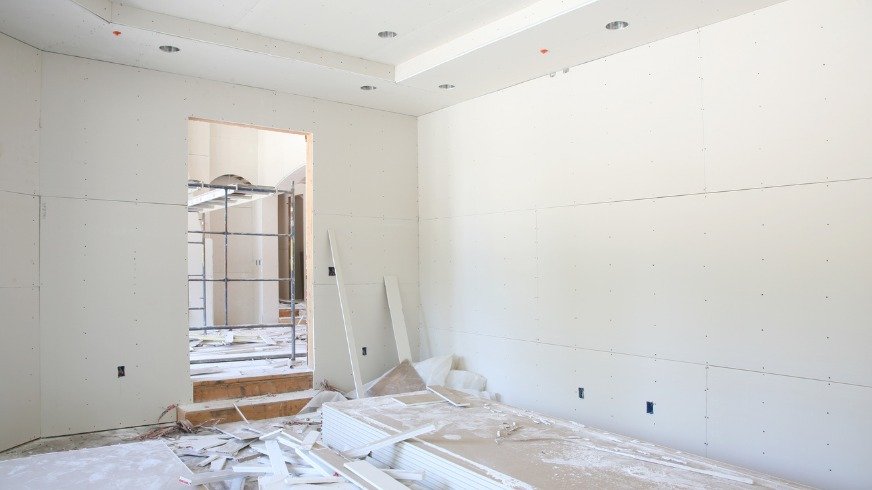Drywall installation is a critical stage in new house construction. It forms the foundation for the final appearance of your walls and ceilings, ensuring your home looks beautiful and feels structurally sound. Understanding how drywall installation works in new builds helps you appreciate the importance of precision and professional workmanship.
The Role of Drywall in New Home Construction
Drywall is used to:
- Create interior walls and ceilings
- Provide a smooth, uniform surface ready for primer and paint
- Add fire resistance and soundproofing, depending on the type used
In new construction, drywall installation is performed after framing, electrical, plumbing, and insulation are complete, sealing off the structural elements and creating finished rooms.
Steps of Drywall Installation in New Builds
1. Pre-Installation Preparation
- Ensure all inspections for framing, electrical, and plumbing are completed.
- Confirm insulation is installed in walls and ceilings as required.
- Check that framing is plumb and straight to support drywall sheets evenly.
2. Measuring and Cutting
- Measure each wall and ceiling section precisely.
- Cut drywall sheets using a T-square and utility knife for clean, accurate cuts to fit around windows, doors, outlets, and switches.
3. Installing Ceilings First
- Install drywall on ceilings before walls to create tight, supportive seams.
- Use a drywall lift to position sheets safely and accurately.
- Fasten to ceiling joists with screws spaced every 12 inches for secure attachment.
4. Installing Walls
- Begin with the top row of sheets, placing them horizontally to reduce seams.
- Stagger vertical joints for increased wall strength.
- Secure to studs with screws every 16 inches, ensuring edges align with framing.
5. Taping and Mudding
- Apply joint compound to all seams and embed drywall tape.
- Add additional coats of compound, feathering edges wider with each layer for a seamless finish.
- Cover all screw heads with compound and install corner beads on external corners for reinforced edges.
6. Sanding and Priming
- Sand all seams, corners, and screw spots to create a smooth, flawless surface.
- Apply primer to seal the drywall and prepare it for painting, ensuring uniform paint absorption across all surfaces.
Why Professional Drywall Installation is Essential for New Builds
Ensures flawless finishes throughout the home
Maintains structural integrity of walls and ceilings
Reduces the risk of cracks and imperfections over time
Keeps construction timelines on track with efficient installation
Complies with building codes for fire-rated and moisture-resistant drywall where required
Final Thoughts
In new house construction, drywall installation is not just about covering studs – it defines the final look and longevity of your interior spaces. Hiring experienced professionals ensures each sheet is installed correctly, joints are seamless, and the entire home is ready for its finishing touches with confidence.


 Blog
Blog